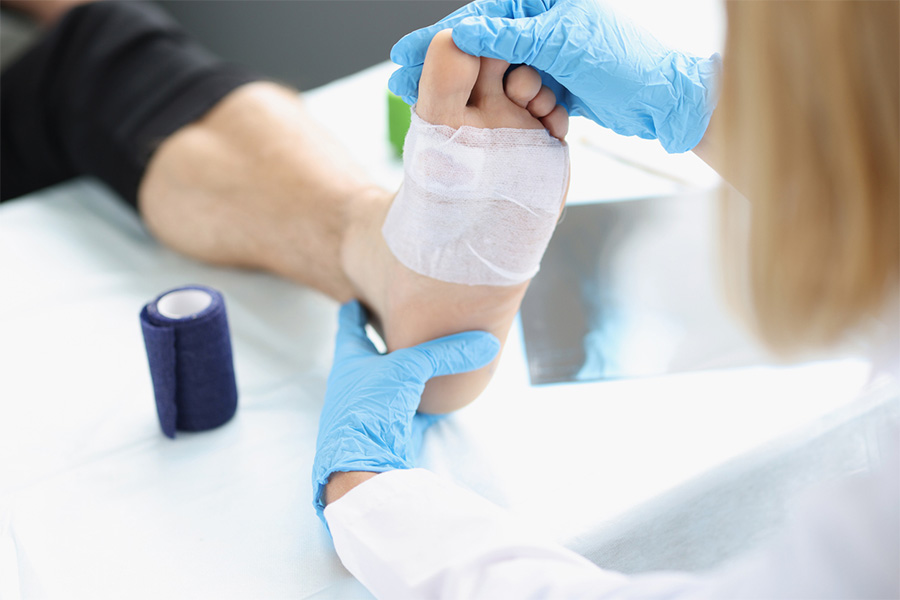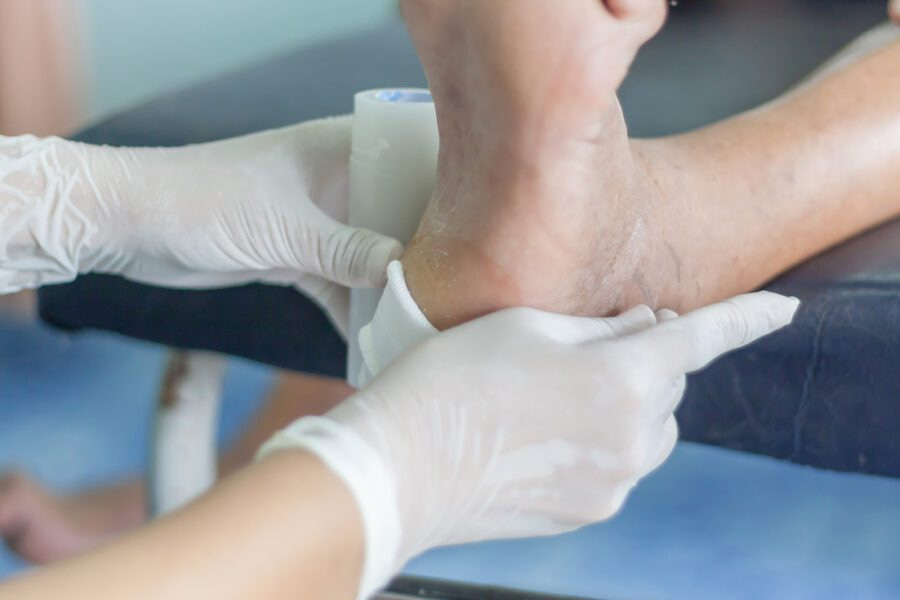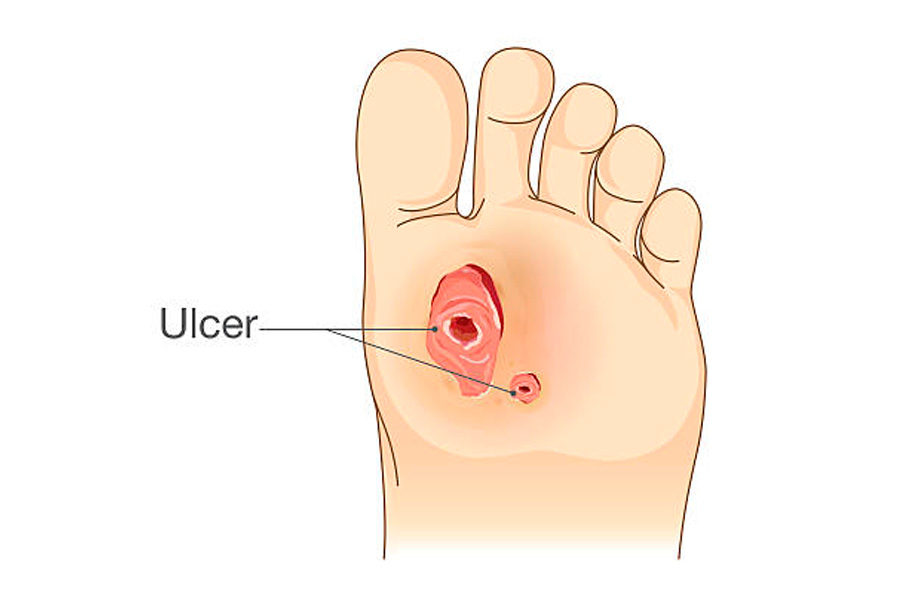If you have diabetes, you have to be especially mindful of your feet. Because the high blood sugar that is related to diabetes can damage the nerves, especially in your legs and feet, it can make your feet numb – so you cannot feel a skin infection that is developing. Diabetes can also lead to poor blood circulation, which reduces your skin’s ability to heal. All of this is called “diabetic foot.”
Therefore, if you are diabetic, you are more susceptible to developing a variety of foot problems than is the average person. If a foot ulcer (skin infection) becomes severe, it may lead to the need for amputation.
That is why it is vitally important for you to learn proper foot care if you have diabetes. Let’s explore some of the major foot symptoms and what you can do about it.
How Can Diabetes Affect My Feet?
Up to 70% of people with diabetes develop nerve damage, or neuropathy, in the legs and feet. This nerve damage makes you vulnerable to a host of foot problems, including the following:
Loss of Feeling
Diabetic nerve damage is often accompanied by weakness, numbness, and a tingling and burning sensation in the lower extremities. Therefore, you may not be able to feel any pain from a wound that is developing on your legs and feet, and you will not be able to detect severe temperatures such as a hot surface.
This can cause an injury, because your feet could be exposed to harm and you wouldn’t be able to feel it. Even a small pebble in your shoe could cause a foot injury. An untreated foot wound can turn into calluses, blisters, and a severe infection without even knowing it.
Skin Changes
Dry, peeling, and cracked feet is another common problem in diabetics. Be sure to moisturize your feet in order to help prevent skin breakage and infections; however, avoid putting moisturizer between the toes in order to prevent a fungal infection from developing.
If you have any calluses on your feet, have them trimmed by a medical professional before they turn into ulcers (sores). A skilled podiatrist can carefully remove your calluses without breaking through the skin, thereby avoiding an infection.
Shape Changes
Another side effect of nerve damage is a change in how your feet look. If your feet are developing a new shape, get new shoes that can properly accommodate and support your new foot shape. Ask your podiatrist about specially designed shoes for diabetic feet.
Ulcers and Open Sores
Skin that breaks easily can develop ulcers, and they usually occur in areas that are subject to pressure – such as the ball of your foot or the bottom of the big toe. Ulcers are considered a medical emergency in dealing with diabetes.
If you have an ulcer on the skin of your foot, you will need to wear specialized shoes, braces, or a cast. See your doctor immediately if you have an ulcer, and be sure to have regular appointments with your podiatrist for preventive checkups and treatments.
Diabetic Foot Care in Cincinnati
If you have been diagnosed with diabetes, our podiatrists at Cincinnati Foot & Ankle Care are here to help you manage your condition by providing diabetic foot care. Our compassionate specialists are highly experienced in foot care.
We understand the inherent risks associated with diabetes, which is why we recommend checkups every two or three months for our diabetic patients. We know how to help you control your condition so that you can continue enjoying your life.
To schedule a consultation, call us today at any of our locations across Cincinnati, or fill out our easy-to-use appointment request form online. We look forward to seeing you here!
Share

People with diabetes often experience difficulty healing wounds.




